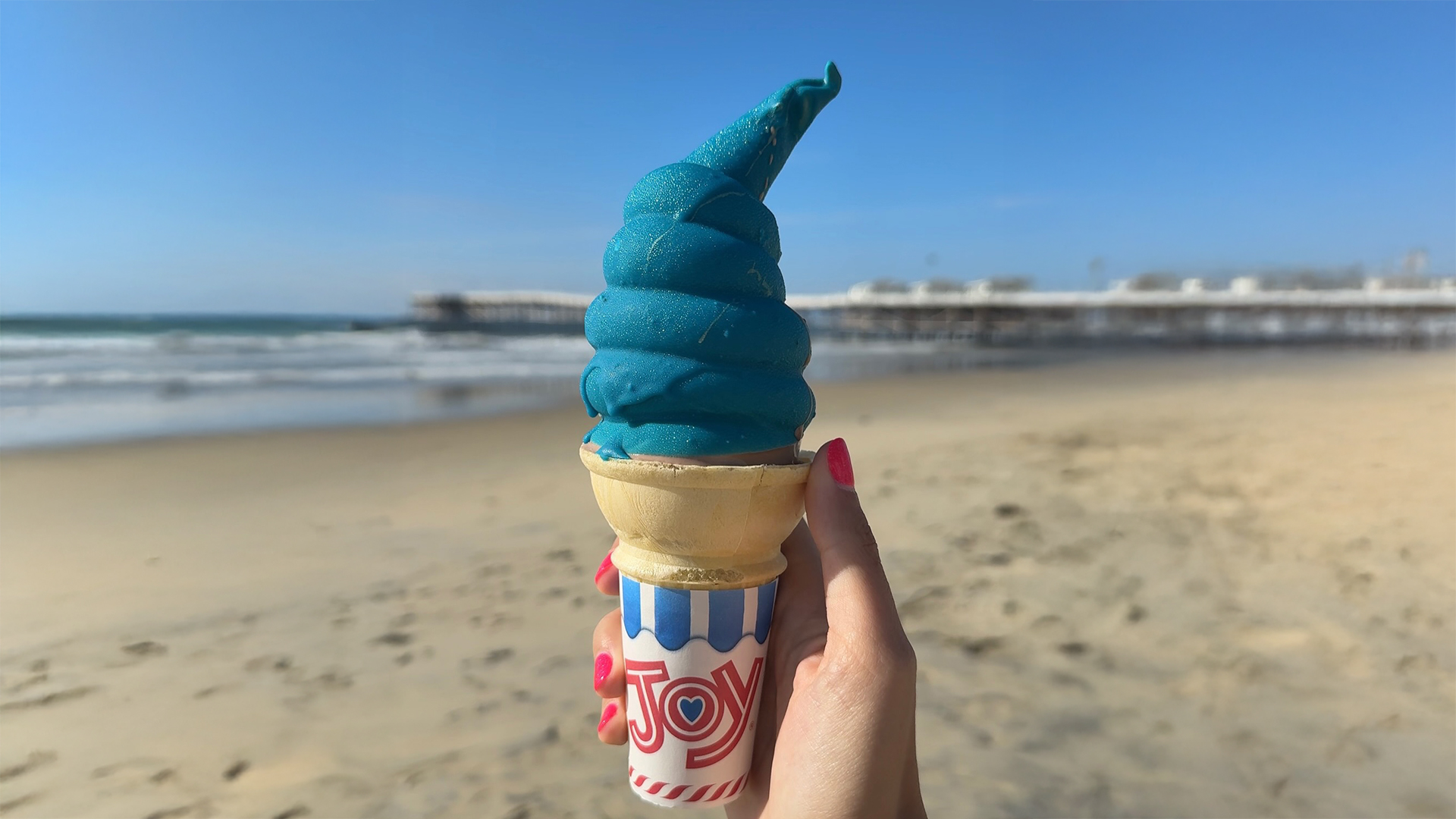
Chill Out: The Science Behind Why Ice Cream is Cold and How It Melts in Your Mouth!
Imagine a hot summer day, the sun beating down, and all you crave is a scoop of your favorite ice cream. But have you ever paused to wonder what makes this delightful treat so cold and why it melts so perfectly in your mouth? Dive into the intriguing world of ice cream as we explore the science behind its chill and its transformative texture. From the delicate balance of air and ice crystals to the way your body temperature orchestrates the melting process, every bite is a mini science experiment! Get ready to indulge not just your taste buds but also your curiosity as we unravel the fascinating chemistry at play. So, grab a spoon and prepare to savor not just your ice cream but the cool science behind its irresistible allure!
The Chemistry of Ice Cream: Understanding Its Composition
Ice cream, a beloved dessert enjoyed by millions around the world, is much more than just a simple frozen treat. At its core, ice cream is a complex food matrix composed of various ingredients that interact in fascinating ways. The primary components of ice cream include water, milk fat, milk solids, sweeteners, stabilizers, emulsifiers, and air. Each of these ingredients plays a crucial role in determining the overall texture, flavor, and mouthfeel of the final product. Understanding the chemistry behind these ingredients is essential to appreciate why ice cream is cold and how it melts so perfectly in your mouth.
Water is the most abundant component in ice cream, making up about 55-64% of the total composition. Water’s role is fundamental, as it forms the ice crystals that give ice cream its frozen structure. Milk fat, typically derived from cream, provides richness and smoothness to ice cream. It also contributes to the creamy texture that we all love. Milk solids, which include proteins and lactose, add body and improve the overall mouthfeel of the ice cream. Sweeteners, such as sugar, not only enhance the flavor but also lower the freezing point of the mixture, ensuring a softer texture at lower temperatures.
Stabilizers and emulsifiers are often added to ice cream to improve its texture and stability. Stabilizers, such as guar gum or carrageenan, prevent the formation of large ice crystals, ensuring a smooth consistency. Emulsifiers, like lecithin or mono- and diglycerides, help to evenly distribute fat throughout the mixture, preventing separation and improving the overall structure. Finally, air is incorporated into ice cream during the churning process, creating a light and airy texture that is essential for a pleasant eating experience. This delicate balance of ingredients is what makes ice cream such a unique and enjoyable treat.
Why is Ice Cream Cold? The Role of Temperature
The chill of ice cream is one of its most defining characteristics, but have you ever wondered why it is so cold? The answer lies in the role of temperature and the physical principles that govern the freezing process. Ice cream is typically stored and served at temperatures below freezing, usually around -20°C to -25°C (-4°F to -13°F). This low temperature is crucial for maintaining the solid state of ice cream and preventing it from melting too quickly.
The freezing process of ice cream begins with the mixture of ingredients being cooled to below the freezing point of water, which is 0°C (32°F). However, due to the presence of solutes like sugar and milk solids, the freezing point of the ice cream mixture is actually lower than that of pure water. As the temperature drops, ice crystals begin to form from the water content in the mixture. The formation of these ice crystals is a critical step in creating the smooth and creamy texture of ice cream. The size and distribution of these ice crystals are influenced by the rate of freezing and the presence of stabilizers, which help to inhibit the growth of large crystals.
Maintaining the low temperature of ice cream is essential for preserving its quality and texture. If ice cream is exposed to temperatures above freezing for extended periods, it can begin to melt and refreeze, leading to the formation of larger ice crystals and a grainy texture. This process, known as recrystallization, can significantly impact the enjoyment of ice cream. Therefore, proper storage at consistently low temperatures is crucial for ensuring that ice cream remains cold and retains its desirable characteristics.
The Science of Melting: How Ice Cream Transitions from Solid to Liquid
The melting of ice cream is a captivating process that involves a delicate interplay of physical and chemical principles. When you take a scoop of ice cream and place it in your mouth, the warmth of your body initiates the melting process. This transition from solid to liquid is not only essential for the enjoyment of ice cream but also reveals the intricate science behind its behavior.
As ice cream warms up, the ice crystals within it begin to absorb heat energy from their surroundings. This absorbed energy causes the ice crystals to undergo a phase change, transforming from a solid state to a liquid state. The rate at which this phase change occurs is influenced by several factors, including the composition of the ice cream, the size of the ice crystals, and the ambient temperature. Smaller ice crystals melt more quickly than larger ones because they have a higher surface area-to-volume ratio, allowing them to absorb heat more efficiently.
The melting process is also affected by the presence of emulsifiers and stabilizers in the ice cream. Emulsifiers help to evenly distribute fat throughout the mixture, creating a more stable structure that resists melting. Stabilizers, on the other hand, help to bind water molecules, reducing the rate at which ice crystals melt. These additives play a crucial role in ensuring that ice cream melts smoothly and evenly, providing a consistent and enjoyable eating experience. The balance of these ingredients is key to achieving the perfect melt-in-your-mouth sensation.
The Impact of Ingredients on Texture and Melting
The ingredients used in ice cream not only influence its flavor but also have a profound impact on its texture and melting behavior. Each component of ice cream contributes to its overall structure, and variations in ingredient composition can lead to significant differences in the final product. Understanding how these ingredients interact is essential for creating ice cream with the desired texture and melting properties.
Milk fat is one of the most important ingredients in ice cream, contributing to its creamy texture and rich mouthfeel. Higher fat content generally results in a smoother and more indulgent ice cream. However, too much fat can lead to a greasy texture, while too little can result in an icy or watery consistency. The balance of fat is crucial for achieving the ideal texture and melt. Similarly, the type of sweetener used in ice cream can affect its melting behavior. Sugars like sucrose and glucose not only sweeten the ice cream but also influence its freezing point. Different sweeteners have varying abilities to lower the freezing point, which can impact the softness and melt rate of the ice cream.
Stabilizers and emulsifiers play a vital role in controlling the texture and melting properties of ice cream. Stabilizers, such as guar gum and carrageenan, help to prevent the formation of large ice crystals, ensuring a smooth and creamy texture. Emulsifiers, like lecithin, assist in dispersing fat evenly throughout the mixture, creating a stable emulsion that resists melting. The precise combination and concentration of these additives are essential for achieving the desired texture and melt profile. Experimenting with different ingredients and formulations allows ice cream makers to create a wide range of textures and melting characteristics, catering to diverse consumer preferences.
The Role of Air in Ice Cream: Overrun and Its Effects
Air is an often-overlooked but crucial component of ice cream that significantly influences its texture and overall quality. The incorporation of air into ice cream during the churning process is known as overrun. Overrun refers to the increase in volume of the ice cream mixture due to the incorporation of air. The amount of overrun can vary widely, typically ranging from 30% to 100%, depending on the type of ice cream and the desired texture.
The presence of air in ice cream has several important effects on its texture and mouthfeel. First and foremost, air contributes to the light and airy texture that is characteristic of high-quality ice cream. Without sufficient air, ice cream would be dense and heavy, lacking the smooth and creamy consistency that consumers expect. The incorporation of air also affects the melting behavior of ice cream. Ice cream with higher overrun tends to melt more quickly and evenly, providing a pleasant and consistent eating experience.
The amount of overrun is carefully controlled during the manufacturing process to achieve the desired texture and quality. Commercial ice cream makers use specialized equipment to churn the ice cream mixture while incorporating air. The speed and efficiency of this process are critical for achieving the optimal overrun. Additionally, the type of ingredients used, such as stabilizers and emulsifiers, can influence the ability of the mixture to retain air. The balance of these factors determines the final texture and melt profile of the ice cream. Understanding the role of air and overrun is essential for creating ice cream that is both enjoyable to eat and visually appealing.
The Perfect Serving Temperature for Ice Cream
Serving ice cream at the right temperature is essential for maximizing its flavor, texture, and overall enjoyment. While ice cream is typically stored at very low temperatures to maintain its solid state, the optimal serving temperature is slightly higher. Understanding the ideal serving temperature can enhance your ice cream experience and ensure that you savor every bite.
The perfect serving temperature for ice cream is generally considered to be between -12°C to -14°C (10°F to 7°F). At this temperature range, ice cream is firm enough to hold its shape but soft enough to scoop easily. Serving ice cream at too low a temperature can make it hard and difficult to scoop, while serving it at too high a temperature can cause it to melt too quickly. The ideal serving temperature allows the ice cream to soften slightly, enhancing its creamy texture and releasing its full flavor potential.
Different types of ice cream may have slightly different optimal serving temperatures. For example, premium ice creams with higher fat content may benefit from a slightly warmer serving temperature to fully appreciate their rich and indulgent texture. On the other hand, lighter ice creams or sorbets may be best enjoyed at slightly colder temperatures to maintain their refreshing qualities. Experimenting with different serving temperatures can help you discover the best way to enjoy your favorite ice cream flavors.
The Experience of Eating Ice Cream: Taste, Texture, and Temperature
The experience of eating ice cream is a multisensory delight that engages your taste buds, sense of touch, and perception of temperature. Each of these elements plays a crucial role in creating the overall enjoyment of ice cream. Understanding how taste, texture, and temperature interact can enhance your appreciation of this beloved dessert.
Taste is one of the most immediate and recognizable aspects of eating ice cream. The sweetness of the ice cream, combined with the flavors from ingredients like vanilla, chocolate, or fruit, creates a pleasurable sensation on your taste buds. The balance of flavors is essential for a satisfying ice cream experience. Too much sweetness can be overwhelming, while too little can result in a bland and uninteresting taste. The choice of flavorings and the quality of ingredients also play a significant role in determining the overall taste of the ice cream.
Texture is another critical element that contributes to the enjoyment of ice cream. The smooth and creamy consistency of high-quality ice cream is a result of the careful balance of ingredients and the incorporation of air. The size and distribution of ice crystals, the presence of fat, and the use of stabilizers all influence the texture of the ice cream. A well-made ice cream should have a velvety texture that melts smoothly in your mouth, providing a luxurious and indulgent experience. The texture is also influenced by the serving temperature, with slightly softened ice cream offering the best mouthfeel.
Temperature plays a unique role in the experience of eating ice cream. The coldness of ice cream provides a refreshing contrast, particularly on a hot day. The way ice cream melts in your mouth, transitioning from a solid to a liquid state, adds to the sensory pleasure. The cooling sensation can also enhance the perception of flavors and intensify the overall enjoyment. Paying attention to the interplay of taste, texture, and temperature can deepen your appreciation for the artistry and science behind ice cream.
Fun Facts About Ice Cream: History and Innovations
Ice cream has a rich history and has undergone numerous innovations over the centuries. Exploring the origins and evolution of ice cream can provide fascinating insights into how this beloved dessert has become a global phenomenon. From ancient delicacies to modern-day treats, the story of ice cream is filled with interesting facts and milestones.
The origins of ice cream can be traced back to ancient civilizations. Historical records suggest that the Chinese were among the first to enjoy a form of ice cream as early as 200 BC. They created a mixture of milk and rice that was packed in snow to freeze. Similarly, the ancient Persians developed a chilled dessert made from rose water and vermicelli, which was enjoyed during hot summer months. These early versions of ice cream laid the foundation for the development of more refined recipes over time.
In the 17th century, ice cream gained popularity in Europe, particularly among the aristocracy. The introduction of sugar to Europe from the New World played a significant role in the evolution of ice cream. The first recorded recipe for ice cream in England dates back to the 1660s. By the 18th century, ice cream had become a fashionable dessert in France, with numerous recipes and variations being created. The invention of the hand-cranked ice cream churn in the 19th century revolutionized the production of ice cream, making it more accessible to the general public.
Modern innovations in ice cream have led to the creation of a wide variety of flavors, textures, and forms. From traditional favorites like vanilla and chocolate to exotic flavors like matcha and lavender, the possibilities are endless. Advances in food science and technology have also enabled the development of dairy-free and vegan ice creams, catering to diverse dietary preferences. The use of liquid nitrogen to create instant ice cream and the incorporation of novel ingredients like edible glitter and activated charcoal are just a few examples of the exciting innovations in the world of ice cream.
Conclusion: Embracing the Science of Ice Cream Enjoyment
As we have explored the fascinating science behind ice cream, it becomes clear that this beloved dessert is much more than a simple frozen treat. The intricate interplay of ingredients, temperature, and physical principles creates a unique and enjoyable experience with each bite. Understanding the chemistry of ice cream, the role of temperature, the melting process, and the impact of ingredients on texture and flavor enhances our appreciation for this delightful dessert.
The next time you enjoy a scoop of your favorite ice cream, take a moment to savor not only the taste and texture but also the science that makes it possible. From the formation of ice crystals to the incorporation of air and the careful balance of ingredients, each element contributes to the overall enjoyment of ice cream. Whether you prefer classic flavors or adventurous combinations, the science behind ice cream ensures that there is something for everyone to enjoy.
So, grab a spoon and indulge in the cool, creamy, and delicious world of ice cream. Embrace the science behind its chill and melting magic, and let your curiosity and taste buds be delighted by this timeless treat. The next time you find yourself craving ice cream on a hot summer day, remember that every scoop is a mini science experiment, designed to bring joy and satisfaction with every bite .


